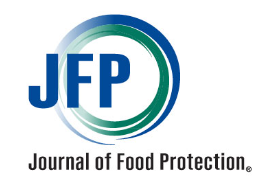The Journal of Food Protection, 5 August 2025, published “Persistence of foodborne bacterial pathogens on microgreens and soil irrigated with contaminated water”. The study aimed to investigate the potential transfer of enteric pathogens to microgreens irrigated with contaminated water. Municipal water (MW) and rainwater (RW) inoculated with low and high concentrations of Salmonella enterica, Escherichia coli O157:H7, or Listeria monocytogenes were used to irrigate daikon, red cabbage, broccoli, and mustard microgreens cultivated on soil beds. The results of this study provided valuable insight into the persistence of foodborne pathogens (S. enterica, E. coli O157:H7, and L. monocytogenes) in microgreens when irrigated with varying contamination levels of MW and rainwater RW. Significant variations in pathogen recovery were observed across days 7 and 14, irrespective of microgreen variety or water source. When irrigated with water at a 5 Log CFU/mL contamination level, all pathogens were significantly reduced by ∼2.5 -4.7 Log CFU/g on the 14th day, irrespective of microgreens or source of irrigation water. At low and high levels of inoculums, L. monocytogenes persisted in lower numbers (2-2.5 Log MPN/g and 3.9-4.1 Log CFU/g)on microgreens compared to Salmonella (3.2-3.8 Log MPN/g and 4.2-4.5 Log CFU/g) and E. coli O157:H7 (2.8-3.4 Log MPN/g and 4.5-4.7 Log CFU/g) respectively, throughout the sampling period. @ https://www.sciencedirect.com/science/article/pii/S0362028X25001462?via%3Dihub

